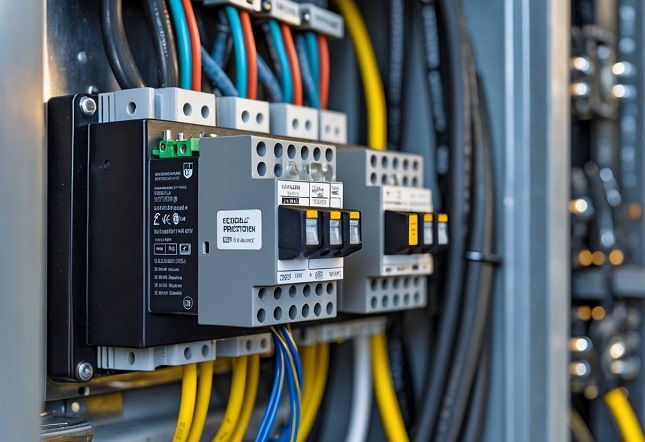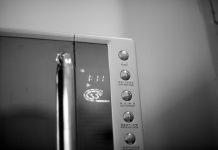A motor circuit protector is an essential device that safeguards electric motors from various electrical faults, ensuring their safety and efficiency. These protectors monitor the flow of electricity and trip the circuit when they detect issues like overloads, short circuits, or phase failures. By acting swiftly to disconnect the motor from the power source, they help prevent potential damage, reduce downtime, and enhance overall operational reliability.
In many industries, electric motors are vital components powering numerous machines and processes. With increasing reliance on these motors, understanding the role of motor circuit protectors becomes crucial for maintaining operational continuity. They provide integrated protection, allowing for smoother functioning while minimizing risks associated with electrical faults.
Motor circuit protectors are commonly found in various applications, from manufacturing plants to HVAC systems. Their importance cannot be overstated, as they not only enhance equipment lifespan but also contribute to safer working environments. This article dives deeper into what motor circuit protectors are, how they function, and why they are indispensable in modern electrical setups.
Defining Motor Circuit Protectors
Motor circuit protectors (MCPs) are essential devices used to safeguard electric motors from potential damage due to electrical faults. Understanding their differences from other protection devices, key components, and operational functions is vital for effective motor management.
Difference Between MCPs and Other Protection Devices
MCPs differ from standard circuit breakers by providing specialized protection for electric motors. Unlike regular circuit breakers, which protect a variety of electrical devices, MCPs are designed specifically for motor applications.
They often include features like instantaneous trip capabilities that react quickly to faults. Furthermore, MCPs may combine functions of overload protection and short circuit interruption. This can eliminate the need for additional devices, simplifying circuit designs.
Standard circuit breakers may not provide the same level of protection for inrush currents associated with motors. This makes MCPs more suitable for industrial and commercial settings where motors are prevalent.
Key Components and Construction
Motor circuit protectors consist of several critical components essential for their operation. The major parts are the overload relay, contactor, and reset mechanism.
- Overload Relay: It senses excessive current and interrupts the circuit to prevent motor damage.
- Contactor: It serves as an electrically operated switch that opens or closes the motor circuit.
- Reset Mechanism: This allows the user to restore the circuit after addressing the cause of the trip.
The construction of an MCP typically involves durable materials to withstand the harsh conditions often found in industrial environments. These devices are built to be robust and reliable.
How Motor Circuit Protectors Work
MCPs operate using a specific mechanism to protect motors. When an overload or short circuit occurs, the overload relay detects the anomaly. It acts quickly, cutting power to the motor to prevent damage.
Some MCPs use thermal protection to manage heat generated by high currents. In contrast, others may utilize magnetic sensors for near-instantaneous response.
Most MCPs also allow for easy resetting, making them user-friendly. This capability ensures that once the issue is resolved, operators can quickly restore functionality without complicated procedures. Thus, they are integral to efficient motor operation and maintenance.
Primary Functions of a Motor Circuit Protector
A motor circuit protector is essential for safeguarding electric motors. It primarily focuses on current overload protection, short-circuit interruption, and coordinating with motor starters to ensure efficient operation and safety.
Current Overload Protection
Current overload protection is a crucial function of a motor circuit protector. It detects when the motor draws more current than it can handle, which can occur due to excess loading or mechanical issues.
When this happens, the protector interrupts the power supply. This prevents overheating that could damage the motor coils and other components.
Key Features:
- Thermal Overload Relays: Used to trip the circuit when overheating is detected.
- Adjustable Settings: Some protectors allow for setting the threshold, ensuring optimal protection for different motor sizes.
Short-Circuit Interruption
Another vital role of a motor circuit protector is to provide short-circuit interruption. A short circuit can happen instantly, allowing excessive current to flow, which risks severe damage.
The motor circuit protector quickly senses this condition and cuts off power to the motor. This rapid response helps prevent catastrophic failures and potential hazards.
Important Aspects:
- Quick Response Time: Protectors are designed to operate within milliseconds, safeguarding both equipment and personnel.
- Reset Mechanism: Many protectors feature a manual reset option after the fault condition is resolved.
Coordination with Motor Starters
Coordination with motor starters is another essential function of motor circuit protectors. They ensure that motor starters operate effectively, enhancing the overall protection strategy.
Motor circuit protectors work in conjunction with devices like contactors to control motor start and stop operations. This coordination helps manage the inrush current during startup, which can be significantly higher than normal operating currents.
Coordination Details:
- Auxiliary Contacts: Many protectors include auxiliary contacts that signal motor starters.
- Seamless Integration: They are designed to work together, resulting in a more reliable and efficient motor protection system.
Applications and Use Cases
Motor circuit protectors (MCPs) play a crucial role in various settings. Their design and function help protect electric motors in multiple applications. Understanding their use cases is essential for ensuring equipment safety and operational efficiency.
Industrial Motor Installations
In industrial environments, electric motors drive essential machines like conveyor belts, compressors, and generators. MCPs safeguard these motors from overcurrents and short circuits, which can cause significant downtime and repair costs.
For example, in manufacturing plants, a sudden motor overload can halt production. An MCP detects these issues quickly and disconnects power to prevent damage. By keeping motors protected, businesses can ensure smoother operations and minimize unexpected breakdowns.
Key Benefits:
- Prevents Downtime: Quick tripping avoids extended halts in production.
- Lowers Maintenance Costs: Reduces the risk of severe motor damage.
Commercial Equipment Protection
In commercial settings, such as office buildings and hotels, motors are critical for elevators, HVAC systems, and various kitchen appliances. MCPs help maintain the functionality of these systems, ensuring that guests experience uninterrupted service.
For instance, a hotel’s heating and cooling systems rely heavily on motors. If a motor fails due to electrical issues, it can lead to discomfort and negative customer experiences. Using an MCP minimizes this risk by providing tailored protection against overloads.
Key Benefits:
- Enhances Guest Comfort: Prevents service disruptions in hospitality.
- Supports Compliance: Helps meet safety regulations in commercial buildings.
HVAC and Pump Systems
HVAC and pump systems are pivotal in managing air quality and water supply in residential and commercial facilities. Electric motors in these systems are prone to overloads, especially during peak usage times.
MCPs offer reliable protection to these motors, ensuring that heating, ventilation, and cooling functions operate smoothly. For example, in a municipal water treatment facility, MCPs protect pumps that regulate water flow.
Key Benefits:
- Ensures Public Health: Maintains consistent operation of essential utilities.
- Reduces Risk of Equipment Failure: Protects critical components from electrical faults.
Installation and Selection Considerations
Selecting and installing a motor circuit protector (MCP) involves several important factors. These factors ensure safety, compliance, and proper functionality in protecting the motor circuits from faults. Careful consideration of the motor ratings, adherence to electrical codes, and following manufacturer recommendations are vital.
Sizing for Motor Ratings
When sizing an MCP, the full-load current (FLC) of the motor is crucial. The selected device should be rated based on the motor’s performance under normal operating conditions.
Steps to determine the correct size:
- Identify the FLC: Refer to the motor’s nameplate or NEC Table 430 for specific ratings.
- Choose the appropriate protection level: Devices should typically be sized to 125% to 300% of the FLC, depending on motor type and application.
- Consider starting currents: Motors often draw much higher currents during startup. This peak may require a larger MCP size to avoid nuisance tripping.
A well-chosen size ensures reliable protection without compromising performance.
Compliance With Electrical Codes
Compliance with electrical codes is mandatory for safety and legal reasons. Local and national electrical codes, such as the NEC (National Electric Code), set standards for the installation of motor circuit protectors.
Key compliance points include:
- Following NEC Article 430: This article covers the necessary requirements for motor circuits, including protection against overloads and short circuits.
- Using listed equipment: Only use MCPs that meet or exceed the specifications outlined in the relevant code.
- Regular inspections: Conduct routine inspections to make sure that installed devices comply with the latest regulations.
Adhering to these codes not only helps in maintaining safety but also avoids potential legal issues.
Manufacturer Recommendations
Manufacturers provide guidelines for installing and selecting motor circuit protectors. Following these recommendations ensures compatibility and effectiveness.
Essential manufacturer considerations:
- Review technical documentation: This includes installation instructions, performance data, and safety features.
- Consider environmental factors: Some devices are rated for specific conditions, like temperature or humidity, which may affect performance.
- Choose compatible MCP types: Depending on the motor type—AC, DC, or specialized motors—select an MCP designed for that specific use.
By adhering to manufacturer guidelines, users can maximize the lifespan and reliability of the motor circuit protector.
Advantages and Limitations of MCPs
Motor Circuit Protectors (MCPs) offer specific advantages for motor protection, while also presenting some potential drawbacks. Understanding both the benefits and limitations is essential for making informed choices in electrical systems.
Benefits Over Standard Circuit Breakers
MCPs from Gabby electrics are designed specifically for electric motors, which distinguishes them from standard circuit breakers. One significant benefit is their fast response time to short circuits and ground faults. This quick action reduces the risk of damage to motor windings and other parts.
Another advantage is their ability to handle high inrush currents that motors experience during startup. MCPs accurately differentiate between safe inrush and harmful overcurrent, minimizing unnecessary trips. Additionally, many MCP models allow for adjustable trip settings, providing tailored protection based on the motor’s load requirements.
MCPs also simplify maintenance. Users can manually reset them after addressing a fault, avoiding the need to replace fuses regularly. This feature can lead to long-term cost savings through reduced downtime and lower repair expenses.
Potential Drawbacks
Despite their advantages, MCPs also have limitations. They typically do not provide overload protection. This means that if a motor runs under excessive load for a prolonged period, an MCP may fail to trip, risking overheating and potential damage. This requires the addition of a separate motor overload relay.
Another limitation is the initial cost. MCPs can be more expensive than standard breakers. While they may save money in the long run due to fewer repairs, the upfront investment may not be suitable for all applications.
Furthermore, not all MCPs are suitable for every environment. Those operating in extreme conditions, such as high dust or moisture, may need specialized models, which can increase costs.
Maintenance Requirements
Maintenance for MCPs is generally straightforward, but users should still ensure regular checks. Routine inspections are essential to confirm that the devices are functioning correctly and to spot any signs of wear or damage.
Testing should occur at scheduled intervals to verify that MCPs trip properly during faults. Maintenance records are important for tracking adjustments and repairs. Proper documentation helps future troubleshooting efforts.
Additionally, ensuring that motors are well-maintained can prolong MCP life. Healthy motors exert less strain, which can prevent premature failure of circuit protectors. Quality parts should always be used for replacements to maintain reliability and safety.










































